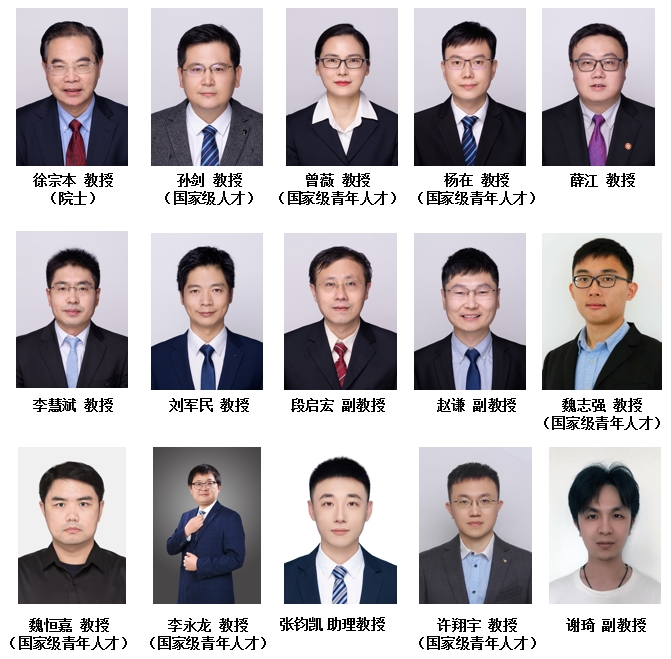
实验室定位:基于“以发展数学前沿技术为导向,以解决国家重大需求为目标,创新校企合作共建新模式”的发展理念,围绕未来无线通信发展,聚焦“基于AI和无线通信的融合研究”,形成新一代的无线通信架构体系创新,深化双方在无线通信领域的合作,共同创新发展新一代信息技术。实验室拟建成一个数学技术和信息技术深度融合的协同创新平台,在无线通信与人工智能领域的方法与技术研究上实现重要创新,在关键核心技术上取得重大突破,建设引领该领域发展的全球顶尖实验室。
目前主要人员构成如下:
主任:徐宗本
副主任:薛江(常务副主任)、杨在
中心成员:徐宗本、孙剑、曾薇、杨在、薛江、李慧斌、刘军民、段启宏、赵谦、魏志强、魏恒嘉、李永龙、张钧凯、许翔宇、谢琦。

代表性成果:研究团队长期从事智能信息处理方面的研究,在智能信息处理的数学基础与图像处理新机制方面成果丰硕。例如,提出并建立了稀疏信息处理的L1/2正则化理论, 形成了“基于L1/2正则化的合成孔径雷达成像新方法”和“不直接基于雷达观测矩阵的稀疏微波成像新原理”。研究成果已被国家安全重大基础研究(国防973)项目采用。
提出基于视觉认知的数据建模新原理与新方法, 形成了聚类分析的“视觉聚类器”、模式识别的“视觉分类机”和信息融合的“响尾蛇模式”等数据挖掘核心算法。上述成果获得国家自然科学二等奖1项,国家科技进步二等奖1项,陈嘉庚信息技术科学奖,陕西省基础研究重大贡献奖。
成立至今,提出多项“智能通信”、“智能运维”、“优化体验”理论与应用技术,并已在华为公司得到验证与应用,例如基于自主搜索深度神经网络的MIMO信号检测人工智能方法;基于元学习机器学习算法的相位噪声盲估计方法;基于数据中学习微分方程的非线性信道建模方法;基于无限维压缩感知理论的信道参数估计算法;基于深度学习和小样本学习的电信网络运维架构与核心算法;基于网络优化理论的5G网络传输协议与优化方法等。研究成果获得“CSIAM应用数学落地成果认证”、华为“突出贡献奖”、“优秀合作奖”等。
研究方向:实验室将结合华为公司的产业发展需求,针对无线通信、人工智能领域内的共性基础与关键技术,开展面向信息产业变革创新的数学与信息技术基础理论、算法与技术研究。目前聚焦的研究内容有:
l 无线专属大模型与极简架构研究;
l 无线通信架构体系创新,推动无线通信物理层智能化的理论及应用研究;
l 基于元学习“模型+数据”双驱动的物理层性能提升算法体系和方法论研究;
l 基于机理和数据双驱动的理论、架构、算法及协议研究,以全面赋能智能运维、体验优化和站点集成三大业务模块。